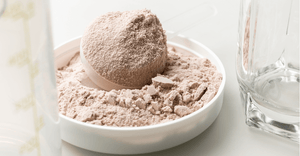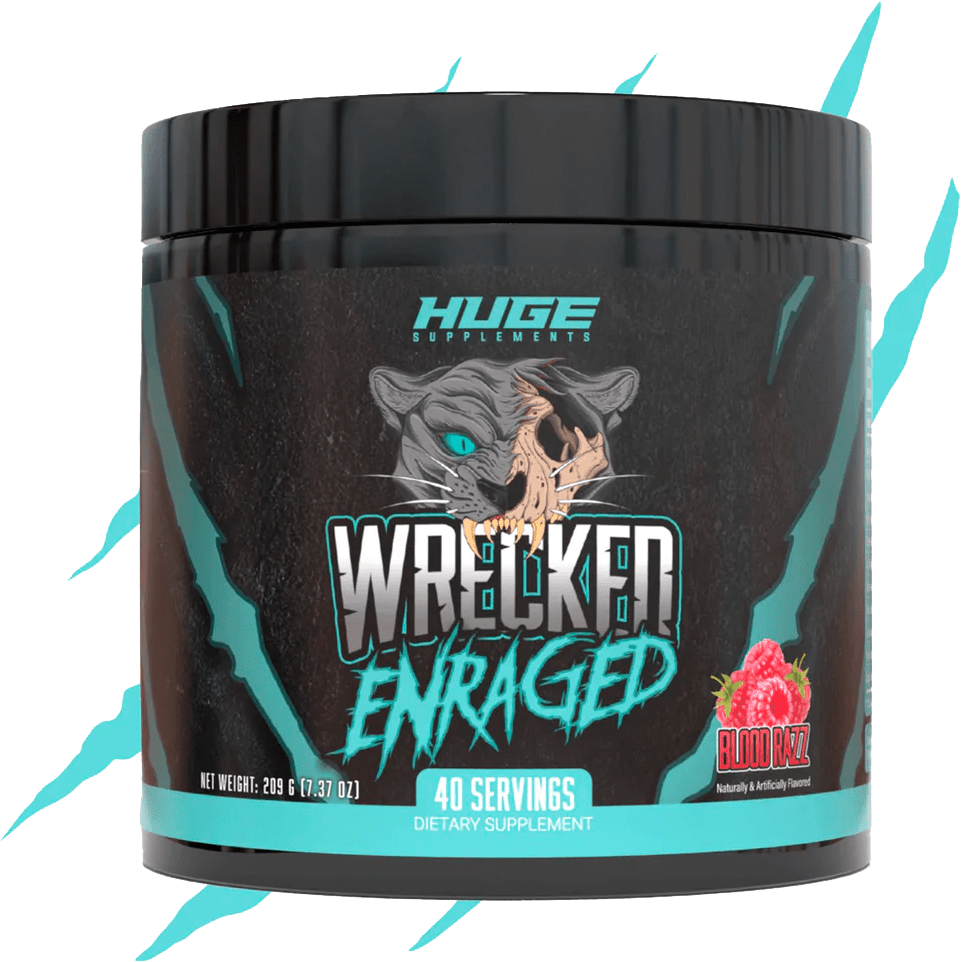Prohormones: What They Are, Risks & Alternatives Explained
Prohormones have long been a topic of interest in the world of fitness and bodybuilding, praised for their ability to enhance muscle gains and performance. However, the conversation surrounding these compounds has shifted over the years.
In this article, we'll explore everything there is to know about prohormones and why their popularity has declined.
What Are Prohormones?
Prohormones are compounds that act as precursors to hormones, particularly anabolic hormones like testosterone. When consumed, they undergo a conversion process in the body, turning into active hormones that enhance physical performance.
Because of this improvement in physical performance, these compounds quickly gained popularity in the fitness and bodybuilding community. Users saw rapid muscle mass and strength increases with the help of prohormones.
Though they were once prevalent in the fitness and bodybuilding communities, many of the well-known prohormones have been banned due to their potential to cause severe side effects such as liver toxicity, hormonal disruptions, and long-term health risks.
The Best Prohormones
Numerous compounds were available back in the day, but only a few were considered the best prohormones. These were believed to be the most powerful and effective. These compounds were known for delivering rapid muscle growth and strength gains, making them the most popular and well-known choice. Among the best were:
Superdrol
Superdrol, also known as methasterone, was one of the most potent prohormones ever available. Its anabolic properties are incredibly high, meaning it could produce rapid lean muscle and strength gains. Even at low dosages, it could deliver impressive results in a short period. Because of this, it was very versatile and used for both bulking and cutting cycles.
Despite being extremely powerful, Superdrol's potency came with significant side effects. It is a methylated compound, meaning it places considerable stress on the liver, leading to a high risk of liver toxicity. Many individuals ended up taking Superdrol, not knowing how potent and harmful it could be.
Besides being liver toxic, other potential side effects included high blood pressure, lipid imbalances, and testosterone suppression. Despite its effectiveness, these severe side effects led to its eventual ban.
Epistane
Another of the most common prohormones was Epistane (Methylepitiostanol). One reason for its popularity was its ability to promote lean muscle gains with relatively low estrogenic activity.
Unlike some of the other compounds, it did not cause significant water retention or bloating. This made it a common option for individuals during cutting cycles, as it provided dry lean muscle gains. It was also thought to have anti-estrogenic properties, making it less likely to cause issues like gyno.
Despite its appeal, Epistane was not without risks. Liver toxicity was a primary concern, especially with high doses or extended use. On top of that, it also suppressed natural testosterone production, meaning it required post cycle therapy to help users recover. Eventually, Epistane was banned and disappeared from the market altogether.
Halodrol
Lastly, we have Halodrol, another well-known prohormone that gained traction for its performance-enhancing abilities. Many considered it an entry-level prohormone. It was widely favored for increasing lean muscle mass, strength, and endurance while maintaining a "dry" look with minimal water retention.
Because of this, individuals preferred to take it during cutting cycles because it gave them a hard, vascular look. Like the other prohormones, Halodrol wasn't without its risks. It is a methylated compound, meaning it's liver toxic and capable of causing harm.
This made on cycle protection essential for anyone taking Halodrol. Plus, since it caused testosterone suppression, PCT was also inevitable. Just as with the other well-known prohormones we've shown you above, Halodrol is no longer available and was banned back in 2014.
Do Prohormones Work?
Many people are curious to know if prohormones work. The answer is yes. They absolutely work to increase size, strength, and performance. And that's no surprise because they are precursors to anabolic hormones, meaning the body converts them into active anabolic compounds after ingestion.
The amount of muscle and strength you can gain varies based on factors like dosage, type of prohormone, training intensity, diet, and individual response. On average, we've seen users gain anywhere from 5 to 15 pounds of size during a typical 4 to 8-week cycle.
But the effectiveness of prohormones comes at a price. They can cause serious side effects, which is why they're no longer as popular as they were.
Alternatives To Prohormones
Since the original prohormones are no longer legal and can have serious adverse effects, many individuals have turned to more accessible alternatives. These options offer performance-enhancing benefits without the side effects associated with traditional prohormones.
They may not be as strong, but they do not carry adverse effects and do not require post-cycle therapy. We've compiled some of the most powerful alternatives.
Sapogenix
Sapogenix is a natural anabolic agent that has gained attention as a potent alternative to prohormones. It contains active ingredients derived from steroidal saponins, naturally occurring compounds in certain plants.
These saponins mimic the effects of anabolic compounds by promoting protein synthesis, muscle growth, and strength gains. It supports lean muscle growth and strength during bulking and helps preserve muscle mass while reducing body fat during cutting cycles.
And what's even better is that Sapogenix has no side effects. There's no liver toxicity or testosterone suppression, so you won't have to worry about taking won't support supplements or planning a post cycle therapy. Sapogenix is still legal and available for use. It's by far the best alternative to prohormones on the market today.
Ecdysterone
Another excellent alternative is Ecdysterone, a naturally occurring ingredient in certain plants and insects. It is also categorized as a natural anabolic agent. Ecdysterone works by enhancing protein synthesis, which can lead to numerous benefits such as increased muscle gains, improved strength, and an overall boost in performance.
It does not interfere with hormone levels, meaning it doesn't cause suppression or require post cycle therapy. Many users who choose to take these alternatives end up stacking them together. When taken simultaneously, they work synergetically and can provide significant improvements.
Prohormones Side Effects & Safety
Prohormones are not considered to be safe, as they can come with many side effects. The main concern with them is liver toxicity. Many prohormones are methylated compounds, meaning they must pass through the liver before the body can use them.
This process puts a significant amount of stress on the liver, which can lead to elevated liver enzymes and potentially damage to the organ.
Plus, there's also testosterone suppresthere's worry about. Prohormones suppress the body's natural testosterone production. Once a cycle ends, natural testosterone needs to recover with the help of post cycle therapy.
But that's not all; there are many other side effects, such as acne, hair loss, and elevated blood pressure, that one can experience when taking these compounds.
Frequently Asked Questions
Do prohormones require post cycle therapy?
Yes, all prohormones suppress natural testosterone production, meaning you'll absolutely need post cycle therapy afterwards. This will help restore hormonal balance and prevent side effects such as muscle loss, fatigue, or libido issues.
Will one cycle of prohormones hurt you?
One cycle of prohormones can hurt you; that's just the simple truth. They are liver-toxic and carry many adverse effects. We advise against them. But, if you do decide to go through, make sure you are stocked up on a powerful cycle support, as well as a PCT Supplements (Post Cycle Therapy).
Do prohormones require on cycle support?
Yes, prohormones are liver toxic, straining the liver and other organs when taken. Therefore, on-cycle support is an absolute must to minimize the risk of damage.
Are prohormones steroids?
Technically speaking, prohormones aren't steroids. With that said, they are closely related. Prohormones convert into anabolic hormones, often mimicking the effects of anabolic steroids, but they require a conversion process in the body, unlike steroids, which are active as soon as they enter the bloodstream.
How long do prohormones stay in your system?
It's hard to say how long prohormones stay in your system because each compound has a different half-life. Some compounds will remain in the system for only a few days, while others can last up to a few weeks.
Are prohormones legal?
Many of the original prohormones were banned under the Designer Anabolic Steroid Control Act of 2014, making them illegal in the United States. However, safer alternatives are now available, but they are less potent.
Conclusion
There's no denying that prohormones are extremely powerful, but what many individuals didn’t realize when they were available is that they can be very harmful.
While they deliver impressive muscle gains and performance boosts, the risks - such as liver toxicity and hormonal imbalances are significant. This is why most of the potent prohormones have been banned, and their use has sharply declined.
Fortunately, safer alternatives like Sapogenix and Ecdysterone offer performance-enhancing benefits without the dangerous side effects. These natural anabolic agents allow users to achieve muscle growth and strength gains without needing post-cycle therapy or on-cycle support.













Leave a comment